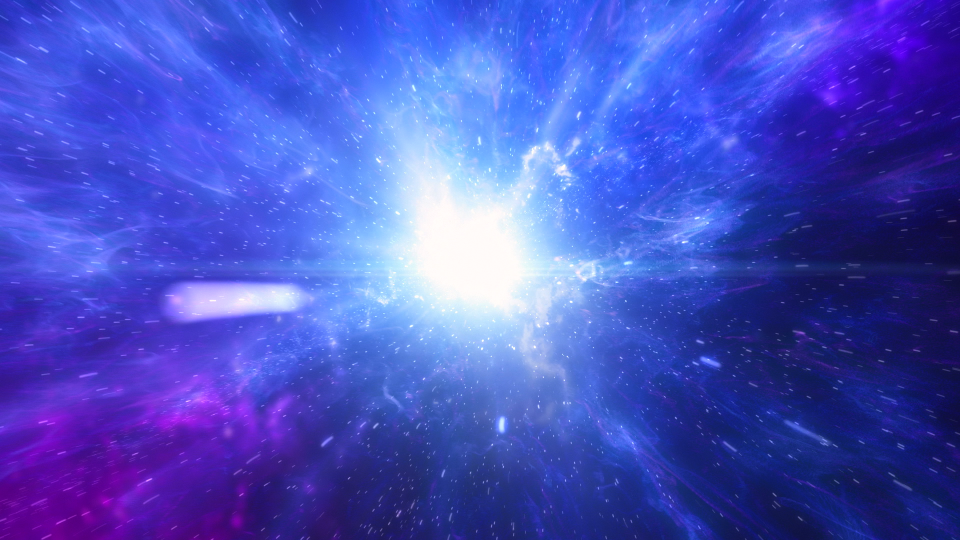Hawaii's newest volcanic cone is over 100 feet tall. How will it be named?

The town of Volcano is swaying, back and forth.
“It’s been rocking and rolling,” Bobby Camara, a Volcano resident who spent decades working as a ranger at the nearby Hawaii Volcanoes National Park, said from his Big Island home.
Though the tremors are mild, they still cause the lamps in Camara’s house to gently swing.
“You feel like you’re drunk or on a boat — the quakes are quite subtle," Camara said.
SEE ALSO: The ocean is cooking off the Southern California coast. Here's why.
For over three months, the southeastern portion of Hawaii has been quaking and gushing lava, though the vigorously erupting lava recently took a pause.
One of the more stark results of this activity — stoked by the movement of hot rock beneath the ground — has been the creation of a volcanic cone, appearing as a sort of blackened, miniature volcano.
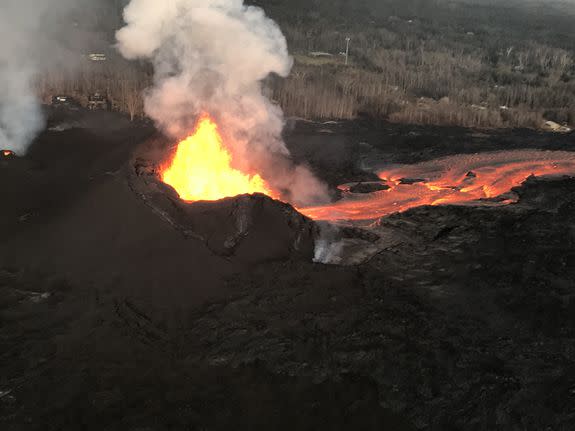
Image: usgs
Currently standing at some 100 feet tall, it grew upwards as lava fountained high into the air, and then fell in heaps back to the ground. Volcano scientists informally call it Fissure 8, and it’s known geologically as a “spatter cone.” But what might this new Hawaiian feature be named?
Many local Hawaiians — both native and those that came here from other lands — want to make sure that the cone gets a Hawaiian name.
Hawaii County councilwoman Sue Lee Loy has even introduced legislation asking that the state confer with local community members to choose a meaningful name that reflects the history and character of the area where it formed.
“We have a name for every wind, current, and ripple of the ocean,” Piilani Kaawaloa, a local Hawaiian community member in the Puna District whose family has lived in the area for generations, said in an interview.
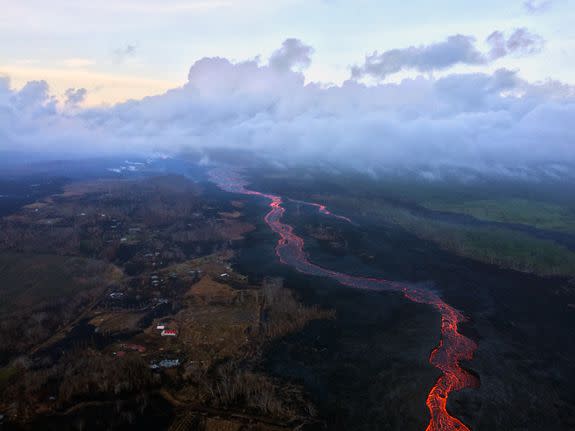
Image: usgs
“We have a name for every single cloud,” added Kaawaloa, who also sits on the Hawaiian cultural advisory committee, Aha Moku. “Our kapuna [elders] were very observant.”
When a name for the new volcanic cone is eventually chosen, it will likely again come from the kapuna, who understand that this volcanism, while dramatic, is expected volcano behavior here.
The Big Island’s young volcano, Kilauea, is growing.
The naming
The U.S. Geologic Survey (USGS), which has been monitoring and researching Kilauea’s activity for decades, is staying out of the naming process, completely.
“It is not the responsibility of the USGS Hawaiian Volcano Observatory (HVO) — or part of our mission — to name geologic/geographic features,” Janet Babb, an HVO geologist, said over email.
While that is the case today, the government has run into some problems in the past when naming volcanic features without input from local groups in Hawaii.
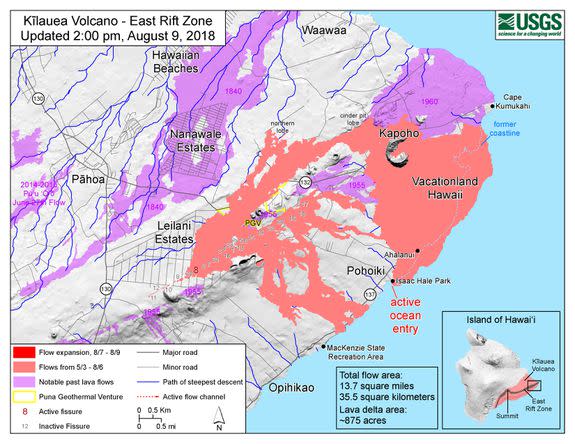
Image: usgs
Amid a flurry of volcanic activity in 1983, a new volcanic cone formed, similar to Fissure 8. It fed rivers of lava, and it was given a name some local Hawaiians didn't appreciate: Pu'u O.
"I gave it that name," admitted Camara without hesitation. He was a 30-year-old park ranger at the time.
The cone had been erupting for a while, so rangers figured they ought to give it a name. Camara settled on "Pu'u O," a somewhat fitting name for a gushing volcanic vent, as "ō" means to "endure" or "continue."
The first portion of the name wasn't the problem. "Pu'u," which means hill, bulge, or peak, is often used to describe volcanic cones around the Hawaiian islands. But the designation "ō" didn't sit well with everyone.
"They didn’t do due diligence to the community," Kaawaloa said.
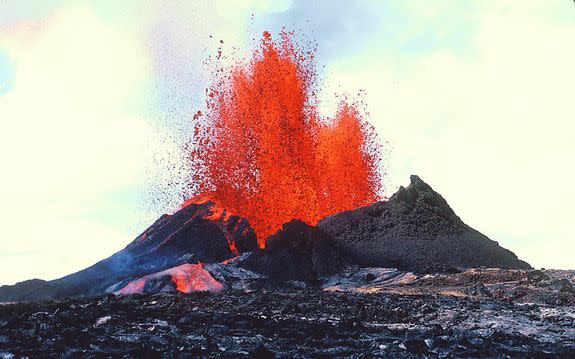
Elders in the community (including Piilani Kaawaloa's grandmother) soon convened. They decided on another name: "Puʻu ʻŌʻō."
"ʻŌʻō," is the digging stick of Pele, the Hawaiian goddess of fire and volcanoes. And with this formidable stick, Pele is said to have dug through the ground, unleashing the fire below.
Decades after the naming of Puʻu ʻŌʻō, there is still no official rule or law requiring the government to seek guidance from Hawaiian kapuna before naming a new lava flow or geologic feature. Rather, it's more of a norm, or a show of cultural respect.
"If anything, we can say the extent to which people who are well-versed in the places and the stories of the location are much more likely to be at play now than in the past," Samuel Ohu Gon lll, a senior scientist and cultural advisor at the Nature Conservancy of Hawaii, said in an interview.
To name or not to name
Councilwoman Lee Loy, with recently introduced legislation, is certainly moving the Fissure 8 naming process forward. But the evolving volcanic cone likely won't be named anytime soon.
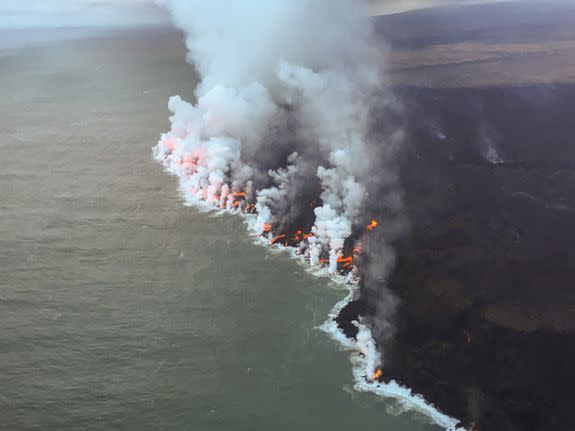
Image: usgs
And that may be a good thing. Fissure 8 is just a few months old. It hasn't fully evolved, and therefore its character isn't fully understood.
"It seems a bit premature to name the Fissure 8 cone, as it's ultimate fate is not known," said Babb, noting that Puʻu ʻŌʻō wasn't officially named for three years until after it formed.
Some community members, like Kaawaloa, also believe it's a better idea to wait, and watch.
"The local community is not in a hurry to name it," Kaawaloa said. "Because you have got to look at the characteristics of the lava flow, and the changes of the lava flow."
Moving too quickly "defeats the purpose of 'pono' — making things right," Kaawaloa said.
Although a well-known community member, Kaawaloa doesn't think she necessarily needs to be on the council that ultimately names Fissure 8.
"It doesn't have to be me," she said.
But if she does contribute, Kaawaloa said it's a serious undertaking. She would be naming a place for perpetuity — or, at least, until it gets smothered in a new lava flow.

"The question is, do I want to be responsible?" she said.
It's not easy to choose a name for an evolving place. Volcanic cones can quickly collapse down into the dark, steaming underworlds whence they came.
In February 1997, 14 years after it was born, Puʻu ʻŌʻō collapsed.
"When the time is right, a name will reveal itself," said Camara, who noted he lives too far from Fissure 8 to be involved in such a hyper-local naming process.
Camara just believes it should be a descriptive or poetic name, he said, pausing as another quake rocked his home.
Anything can happen with a young volcano, he continued. So it's just best to watch, for now.
"For all we know, the Fissure 8 cone is going to fall into a big-ass hole — and then what are you going to do?"
WATCH: Ever wonder how the universe might end?
